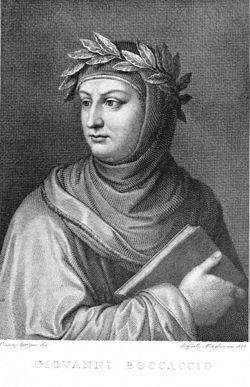Title: “The Princess Who Played the Game: Alatiel and the Masks of Virtue”
I. Introduction
Giovanni Boccaccio’s The Decameron is a masterpiece of storytelling, exploring themes of love, fate, wit, and morality through 100 tales told by a group of young nobles escaping the plague. In Day 2, Story 7, the tale of Alatiel—a beautiful Saracen princess—presents a striking commentary on female agency, sexual politics, and the power of perception in medieval society.
II. Main Plot Summary
Alatiel, the daughter of the Sultan of Babylon, is set to marry the King of Algarve to strengthen political ties. However, her ship is wrecked, and she is swept into a series of misadventures, passing through the hands of various men—noblemen, pirates, and merchants—all entranced by her beauty. After years of sexual relationships and assumed identities, she cleverly returns home and manages to marry the King of Algarve under the false appearance of virginity, securing her royal future.
III. The themes
Wit and Survival: Although Alatiel says little throughout the story, her silence and adaptation are her tools for survival.
Perception vs. Reality: The tale reveals how identity can be manipulated; Alatiel’s “virtue” is restored not through truth, but through careful image control.
Gender and Power: Boccaccio highlights the limited power women had, but also suggests they could reclaim agency in subtle, subversive ways.
IV. Characters and Development
Alatiel: Her beauty is both her curse and her shield. She starts as a passive victim but grows into a shrewd survivor who ultimately controls the narrative of her life.
The Men Around Her: They are driven by lust, power, or political ambition. Their lack of depth contrasts with Alatiel’s evolution and shows how women were commodified in courtly and political life.
The King of Algarve: He serves as a final irony—marrying a woman he believes to be untouched, illustrating society's obsession with female chastity.
V. Social and Historical Context
This tale mirrors the complex dynamics of medieval Mediterranean politics, with Christian and Muslim characters involved in diplomacy and trade. It also critiques the hypocrisy of courtly morality, especially the double standards surrounding female sexuality. For 14th-century audiences, the story would have provoked both amusement and reflection, challenging their assumptions about virtue, identity, and honor.
Alatiel’s tale, though centuries old, speaks to modern issues: the control of female narratives, the tension between public persona and private truth, and the resilience needed to survive in a world that reduces people to appearances. Boccaccio doesn’t judge Alatiel—he respects her cleverness. As readers, we’re invited not to pity her but to admire the quiet power she wields.
I. Introduction
Giovanni Boccaccio’s The Decameron is a masterpiece of storytelling, exploring themes of love, fate, wit, and morality through 100 tales told by a group of young nobles escaping the plague. In Day 2, Story 7, the tale of Alatiel—a beautiful Saracen princess—presents a striking commentary on female agency, sexual politics, and the power of perception in medieval society.
II. Main Plot Summary
Alatiel, the daughter of the Sultan of Babylon, is set to marry the King of Algarve to strengthen political ties. However, her ship is wrecked, and she is swept into a series of misadventures, passing through the hands of various men—noblemen, pirates, and merchants—all entranced by her beauty. After years of sexual relationships and assumed identities, she cleverly returns home and manages to marry the King of Algarve under the false appearance of virginity, securing her royal future.
III. The themes
Wit and Survival: Although Alatiel says little throughout the story, her silence and adaptation are her tools for survival.
Perception vs. Reality: The tale reveals how identity can be manipulated; Alatiel’s “virtue” is restored not through truth, but through careful image control.
Gender and Power: Boccaccio highlights the limited power women had, but also suggests they could reclaim agency in subtle, subversive ways.
IV. Characters and Development
Alatiel: Her beauty is both her curse and her shield. She starts as a passive victim but grows into a shrewd survivor who ultimately controls the narrative of her life.
The Men Around Her: They are driven by lust, power, or political ambition. Their lack of depth contrasts with Alatiel’s evolution and shows how women were commodified in courtly and political life.
The King of Algarve: He serves as a final irony—marrying a woman he believes to be untouched, illustrating society's obsession with female chastity.
V. Social and Historical Context
This tale mirrors the complex dynamics of medieval Mediterranean politics, with Christian and Muslim characters involved in diplomacy and trade. It also critiques the hypocrisy of courtly morality, especially the double standards surrounding female sexuality. For 14th-century audiences, the story would have provoked both amusement and reflection, challenging their assumptions about virtue, identity, and honor.
Alatiel’s tale, though centuries old, speaks to modern issues: the control of female narratives, the tension between public persona and private truth, and the resilience needed to survive in a world that reduces people to appearances. Boccaccio doesn’t judge Alatiel—he respects her cleverness. As readers, we’re invited not to pity her but to admire the quiet power she wields.
Title: “The Princess Who Played the Game: Alatiel and the Masks of Virtue”
I. Introduction
Giovanni Boccaccio’s The Decameron is a masterpiece of storytelling, exploring themes of love, fate, wit, and morality through 100 tales told by a group of young nobles escaping the plague. In Day 2, Story 7, the tale of Alatiel—a beautiful Saracen princess—presents a striking commentary on female agency, sexual politics, and the power of perception in medieval society.
II. Main Plot Summary
Alatiel, the daughter of the Sultan of Babylon, is set to marry the King of Algarve to strengthen political ties. However, her ship is wrecked, and she is swept into a series of misadventures, passing through the hands of various men—noblemen, pirates, and merchants—all entranced by her beauty. After years of sexual relationships and assumed identities, she cleverly returns home and manages to marry the King of Algarve under the false appearance of virginity, securing her royal future.
III. The themes
Wit and Survival: Although Alatiel says little throughout the story, her silence and adaptation are her tools for survival.
Perception vs. Reality: The tale reveals how identity can be manipulated; Alatiel’s “virtue” is restored not through truth, but through careful image control.
Gender and Power: Boccaccio highlights the limited power women had, but also suggests they could reclaim agency in subtle, subversive ways.
IV. Characters and Development
Alatiel: Her beauty is both her curse and her shield. She starts as a passive victim but grows into a shrewd survivor who ultimately controls the narrative of her life.
The Men Around Her: They are driven by lust, power, or political ambition. Their lack of depth contrasts with Alatiel’s evolution and shows how women were commodified in courtly and political life.
The King of Algarve: He serves as a final irony—marrying a woman he believes to be untouched, illustrating society's obsession with female chastity.
V. Social and Historical Context
This tale mirrors the complex dynamics of medieval Mediterranean politics, with Christian and Muslim characters involved in diplomacy and trade. It also critiques the hypocrisy of courtly morality, especially the double standards surrounding female sexuality. For 14th-century audiences, the story would have provoked both amusement and reflection, challenging their assumptions about virtue, identity, and honor.
Alatiel’s tale, though centuries old, speaks to modern issues: the control of female narratives, the tension between public persona and private truth, and the resilience needed to survive in a world that reduces people to appearances. Boccaccio doesn’t judge Alatiel—he respects her cleverness. As readers, we’re invited not to pity her but to admire the quiet power she wields.
0 Commenti
·0 condivisioni
·110 Views
·0 Anteprima



